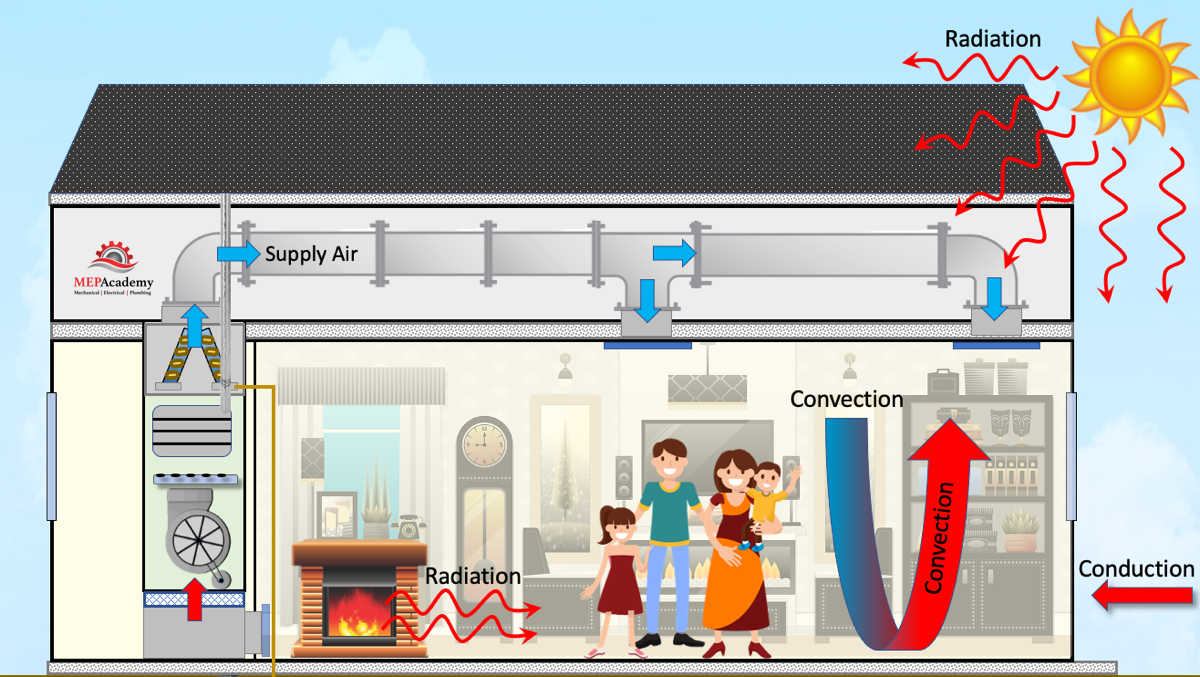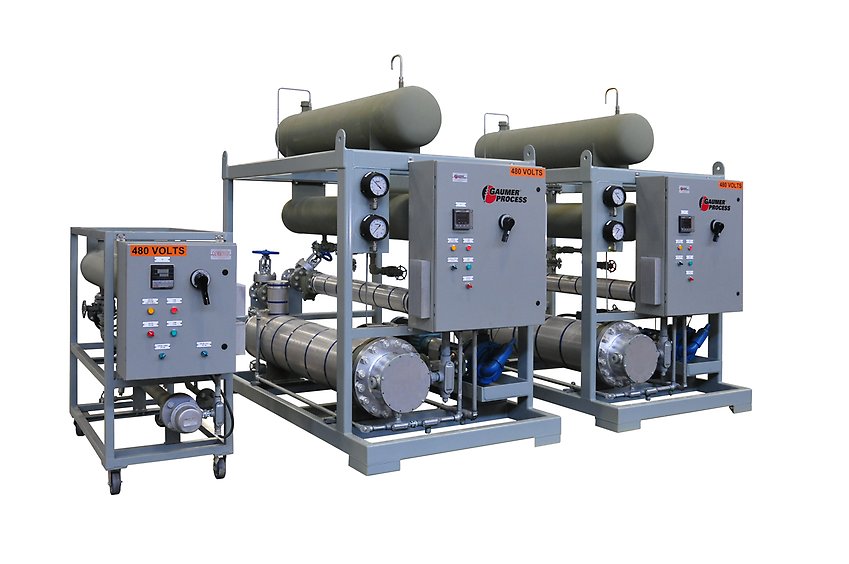Top 7 Reasons to Upgrade to DVS Heat Transfer Systems for Better Heat Dissipation
The Function of Heat Transfer Systems in Sustainable Energy Solutions for the Future
Heat transfer systems are important in the quest for lasting power options. They optimize thermal energy administration, enhancing the performance of eco-friendly modern technologies. By using mechanisms like radiation, conduction, and convection, these systems lessen energy losses. Their duty in solar thermal and geothermal applications is especially considerable. As technologies emerge, the potential for more developments elevates important concerns regarding future energy strategies. What growths will form the landscape of lasting power?
Understanding Heat Transfer Equipments

The Significance of Thermal Power Management
Efficient thermal power monitoring is necessary for optimizing power efficiency and minimizing waste in various systems. By controling temperature and optimizing Heat transfer procedures, organizations can considerably decrease power consumption and operational expenses. Reliable monitoring involves the execution of sophisticated technologies and techniques that check and manage thermal problems within systems, guaranteeing that energy sources are used efficiently. On top of that, appropriate thermal energy administration adds to lowering greenhouse gas emissions, lining up with international sustainability goals. It likewise boosts system reliability and efficiency, leading to boosted item top quality and longer tools life-span. Ultimately, focusing on thermal power monitoring is a vital action in the direction of developing extra lasting power options and promoting an accountable method to energy consumption in industrial and property contexts.
Applications of Heat Transfer in Renewable Resource
While different sustainable energy resources assure sustainability, the effective application of Heat transfer plays a vital role in their effectiveness. In wind power systems, Heat transfer is made use of for turbine part cooling, enhancing efficiency and durability. Geothermal energy relies upon effective Heat exchange in between the planet's subsurface and the fluid circulating in the system, making the most of power removal. Biomass energy processes additionally benefit from Heat transfer, as it assists in converting natural products into useful fuel via pyrolysis and gasification. In addition, in hydropower, preserving optimal temperature levels in tanks can improve power output. Each of these applications demonstrates the essential value of Heat transfer systems in enhancing renewable resource technologies, inevitably contributing to an extra sustainable power future.
Enhancing Solar Thermal Power Effectiveness
As solar thermal power systems remain to evolve, enhancing their efficiency has actually come to be essential for making the most of energy output. Breakthroughs in Heat transfer modern technologies, such as improved thermal storage space materials and ingenious Heat exchangers, play a considerable role in enhancing performance. By making use of advanced materials that have premium thermal conductivity, systems can move and record Heat more properly. Additionally, incorporating tracking systems that comply with the sun's path warranties that collectors get suitable solar exposure throughout the day. Making use of nanotechnology in solar absorbers can further enhance power absorption rates. Including automatic control systems assists take care of and manage temperature levels power distribution efficiently, leading to decreased losses and enhanced general system effectiveness. These enhancements pave the way for more lasting solar thermal power options in the future.
Geothermal Heating: A Sustainable Solution
Geothermal home heating offers a practical alternative for lasting energy, offering substantial ecological advantages through decreased greenhouse gas emissions. Its performance and cost-effectiveness make it an eye-catching choice to standard furnace. Nonetheless, challenges connected to execution must be addressed to optimize its possible influence.
Ecological Benefits of Geothermal
Although standard heating methods contribute considerably to greenhouse gas emissions, geothermal home heating presents an engaging choice that decreases ecological impact. By utilizing the Planet's internal Heat, geothermal systems use a renewable resource resource, significantly lowering reliance on nonrenewable fuel sources. This approach generates minimal carbon discharges, making it a cleaner option for commercial and household home heating. In addition, geothermal systems promote power efficiency, as they require much less power compared to conventional heater. DVS Heat Transfer Systems. The usage of geothermal power additionally helps in minimizing air pollution, improving neighborhood air high quality and public health and wellness. As a sustainable solution, geothermal home heating supports environment change reduction initiatives, placing itself as an important element in the change in the direction why not try this out of a greener future
Performance and Cost-Effectiveness
Just how does geothermal heating gauge up in terms of effectiveness and cost-effectiveness compared to traditional furnace? Geothermal home heating demonstrates exceptional performance, often attaining a coefficient of efficiency (POLICE OFFICER) of 3 to 5, suggesting it produces 3 to five systems of Heat for every system of electrical power eaten. This performance equates into lower operating expense, especially in areas with secure geothermal resources. First setup costs can be higher than traditional systems; nevertheless, lasting cost savings on energy costs and decreased maintenance expenses can balance out these upfront investments. In addition, lots of governments incentivize geothermal systems via refunds and tax credit ratings, improving their cost-effectiveness. Overall, geothermal home heating emerges as a financially viable and sustainable option to more traditional home heating options.
Application Challenges and Solutions
Various difficulties can hamper the extensive execution of geothermal furnace, regardless of their clear advantages as a sustainable energy service. High first installation prices commonly deter financiers and property owners, making financing a substantial barrier. Furthermore, the geographical constraints of suitable geothermal sites restrict access in particular regions. Local guidelines and permitting procedures can additionally complicate project advancement, leading to hold-ups. Moreover, public awareness and understanding of geothermal systems stay reduced, impeding approval. To attend to these obstacles, targeted education and learning projects can improve public knowledge, while government incentives could ease economic problems. Teaming up with neighborhood authorities to simplify regulations may facilitate smoother project approvals, inevitably promoting the adoption of geothermal home heating as a sensible, sustainable energy option.
Developments in Heat Transfer Technologies
Developments in Heat transfer technologies play an essential function in boosting energy performance and sustainability. Advanced Heat exchangers and stage adjustment materials go to the forefront of these growths, using substantial renovations in thermal monitoring. These modern technologies not only maximize power usage but likewise add to reducing environmental influence in different applications.
Advanced Heat Exchangers
Advanced Heat exchangers play a vital duty in enhancing power efficiency throughout numerous applications in sustainable energy solutions. These gadgets assist in the transfer of Heat between 2 or even more fluids, considerably reducing energy usage in procedures such as industrial heating, air conditioning, and power generation. Technologies in products and style, such as the usage of nanofluids and small setups, have led to improved thermal efficiency and decreased dimension requirements. In addition, improvements in digital monitoring and control systems enable maximized operation, additional raising effectiveness. By decreasing waste Heat and making the most of energy healing, progressed Heat exchangers contribute to lower carbon impacts and support the change towards eco-friendly technologies. Their proceeded growth is vital for accomplishing international power sustainability goals.
Phase Modification Materials
The combination of stage modification products (PCMs) into Heat transfer technologies represents a considerable improvement in power administration and efficiency. PCMs absorb and release thermal power during their phase modifications, making it possible for effective temperature guideline in structure products and energy systems. By storing excess Heat during top periods and launching it when demand increases, PCMs contribute to pack changing and energy preservation - DVS Heat Transfer Systems. This capacity enhances the efficiency of renewable energy systems, particularly in solar thermal applications. Additionally, PCMs can boost the thermal convenience of interior settings, reducing dependence on standard heating and cooling approaches. As developments in PCM formulations remain to arise, their duty in lasting power solutions is positioned to expand, using appealing avenues for future research and application

Future Prospects for Heat Transfer in Sustainable Power
As the need for lasting energy remedies continues to rise, the role of Heat transfer systems is coming to be increasingly important in forming future technologies. Innovations in styles and products are expected to improve performance in Heat transfer, reducing energy losses in various applications. The assimilation of advanced thermal storage systems, such as phase modification products and thermochemical storage space, will allow far better monitoring of power sources. Research study right into nanofluids and biomimetic Heat exchangers may further enhance thermal performance. Moreover, the adoption of smart technologies will permit for real-time tracking and adaptive control of Heat transfer processes. These developments are poised to significantly add to the total performance and sustainability of energy systems, leading the way for an extra energy-efficient future.
Regularly Asked Inquiries
Exactly How Can Individuals Carry Out Heat Transfer Equipment in your home?

Individuals can implement Heat transfer systems in your home by installing energy-efficient devices, utilizing radiant home heating, and enhancing insulation. These measures boost energy efficiency, lower Source prices, and advertise sustainable techniques in residential settings.

What Are the Expenses Connected With Setting Up Heat Transfer Solutions?
The prices associated with installing Heat transfer systems differ commonly, usually encompassing devices, installation labor, and maintenance. Aspects such as Web Site system type, home size, and local regulations significantly influence the total expenditure included.
Are There Federal Government Motivations for Heat Transfer System Installations?
Government incentives for Heat transfer system setups differ by area and can consist of tax obligation grants, credits, and discounts. These monetary benefits intend to motivate fostering, eventually advertising energy performance and decreasing ecological effect within areas.
Just How Do Heat Transfer Solutions Effect Energy Bills?
Heat transfer systems significantly affect energy expenses by optimizing power efficiency. By boosting the transfer of Heat, these systems minimize energy usage, leading to lower utility expenses and developing a more sustainable technique to power management.
What Upkeep Is Needed for Heat Transfer Systems?
Maintenance for Heat transfer systems includes routine inspections, cleaning of parts, inspecting liquid degrees, guaranteeing proper insulation, and replacing used parts. These tasks aid maintain effectiveness, protect against break downs, and lengthen the system's functional life-span.
These systems assist in the activity of thermal power from one medium to one more, allowing the transfer of Heat for energy, heating, or cooling generation functions. Geothermal power depends on reliable Heat exchange in between the planet's subsurface and the liquid circulating in the system, maximizing power removal. In addition, geothermal systems advertise power performance, as they call for much less power contrasted to standard home heating systems. Advanced Heat exchangers play an essential role in enhancing energy efficiency across various applications in lasting energy options. Heat transfer systems notably affect energy expenses by optimizing energy efficiency.